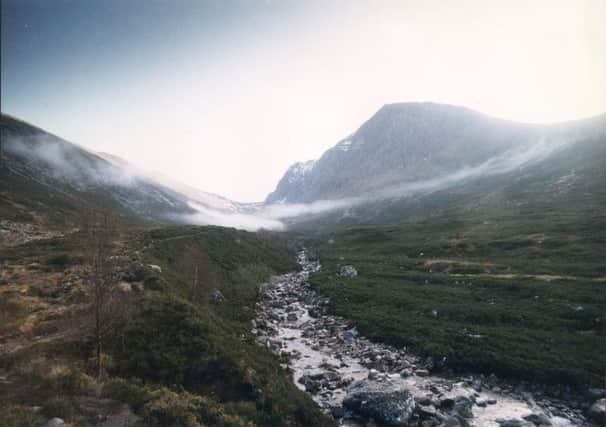Ben Nevis highest peak to undergo botanical study


Botanists are to be joined by geologists and mountaineers to carry out a survey on a remote part of the 300-acre north face of the 4,409ft peak, rarely ever seen by human eye.
The scientific project will help map out the topography, geography and biology of the barely accessible corner of the face - and will help provide information on how to conserve plantlife there in the future.
Advertisement
Hide AdAdvertisement
Hide AdThe north face is internationally important for geology, plants and is also renowned for birds.
The mountain, and some of its satellite hills, provide exceptional habitats for the rare arctic-alpine flora.
The three-year initiative by Scottish Natural Heritage (SNH) will involve 10 experienced climbers and two climbing botanists.
They will conduct a roped access botanical survey of the 125 hectares that make up the steep north face of the Ben.
Also involved in the work is Midland Valley Exploration, who are providing geological survey technology and expertise. They will help investigate the influence geology has on the distribution of the plants.
It is thought a number of new locations for rare species will be found, as well as some species which have so far gone unrecorded on Ben Nevis.
Cathy Mayne of SNH said: “We are very excited to be doing this joint venture between professional botanists, climbers and geologists.
“It will yield important new records on the rare plants found on Ben Nevis. The results should tell us more about the geology of the face and the influence this has on plant distribution.
Advertisement
Hide AdAdvertisement
Hide Ad“It should also flag up any imminent threats to the plants and help us decide if any action is needed to help them.”
She added: “Finding something not previously recorded here would be a real bonus and incredibly exciting were it to happen.”
SNH has invested £52,000 in the three-year Ben Nevis North Face project – part of the Nevis Landscape Partnership scheme.
Tristan Semple, manager of the the partnership, said: “This exciting project brings together film makers, botanists, climbers and geologists to discover some of the mountain’s remaining secrets.
“We will also raise public awareness of mountain environments, their arctic-alpine habitats and the threats posed by climate change.”
Mountain Guide Mike Pescod is responsible for managing the team of climbers doing the survey.
He said: “This is a really interesting project and a great way for us to learn more about the mountain we cherish.
“The more we know about Ben Nevis, what lives and grows there and its geological makeup, the more we will enjoy climbing there. We will also learn what we will need to do to make sure it stays as good as it is now.”
Advertisement
Hide AdAdvertisement
Hide AdThis week the climbers involved are finding out more about the special plants that live in the shady gullies and ledges of their mountain workplace and learning how to identify individual species.
The training will be followed by one-week surveys next week then again in 2015 and 2016.
And, at the end of the three years, a blueprint will exist for repeating this kind of collaborative work on other cliffs in Scotland at which botanical records are scarce or absent.
Clean, dry rock will generally be avoided and the focus will be on the loose, damp ground where these species are most likely to be found.
Botanists will be on hand to assist in the survey and identification of the plants, being taken to the richest locations by the climbers.
The fieldwork and images will be uploaded onto a website.
SNH say that Ben Nevis is a place of contrasts. It occupies an iconic place in the rich history of mountaineering and yet remains at the forefront of modern climbing.
The 700-metre high cliffs on its North Face provide some of the most famous ice climbing routes in the world as well as some of the most ferocious and unpredictable weather conditions in Europe.
As well as an adventure paradise, these cliffs are home to rare and protected species.
Advertisement
Hide AdAdvertisement
Hide AdThe area is designated a Site of Special Scientific Interest and a Special Area of Conservation. Plant assemblages have adapted to the arctic-alpine conditions encountered at the UK’s highest altitude. Semi-permanent snow fields, scree-filled gullies and steep buttresses provide a range of unusual habitats.